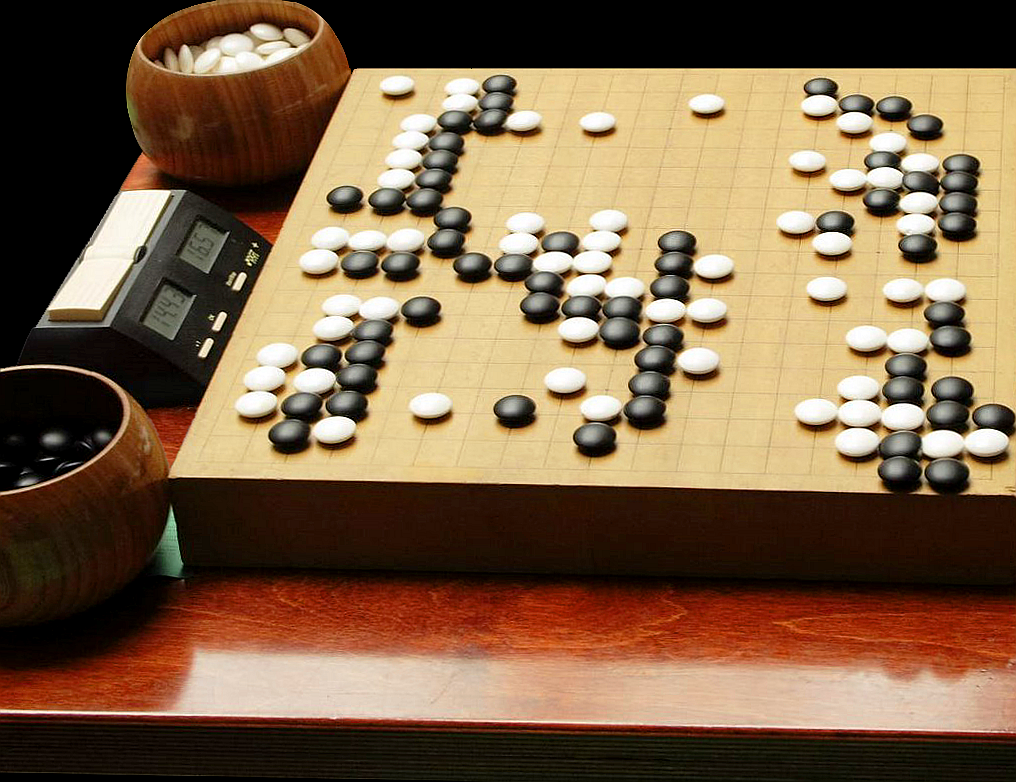|
Aya Fujita
is a Japanese women's professional shogi player ranked 2-dan. She holds the record for being the youngest person at age 11 years 6 months to have ever been awarded women's professional status by the Japan Shogi Association. Early life and apprenticeship Fujita was born on March 24, 1987, in Ōta, Tokyo. She learned how to play shogi from her father as a young girl, but started to become really serious about the game as a second-grade elementary school student. Her father was fairly strict so she was not allowed to watch much television as a child, with the exception being when her family watched the recorded games from the NHK Cup TV Shogi Tournament together weekly. Most of her shogi studying involved solving tsume shogi problems and playing over professional game scores found in Japan Shogi Association (JSA) yearbooks and magazines, but occasionally she would go to play practice games at the shogi club located in the association's Tokyo head office. Fujita entered the JSA' ... [...More Info...] [...Related Items...] OR: [Wikipedia] [Google] [Baidu] |
Ōta, Tokyo
is a Special wards of Tokyo, special ward in the Tokyo, Tokyo Metropolis in Japan. The ward refers to itself in English as Ōta City. It was formed in 1947 as a merger of Ōmori, Ōta, Tokyo, Ōmori and Kamata, Ōta, Tokyo, Kamata following Tokyo City's Local Autonomy Act, transformation into Tokyo Metropolis. The southernmost of the 23 special wards, Ōta borders the special wards of Shinagawa, Tokyo, Shinagawa, Meguro, Tokyo, Meguro and Setagaya, Tokyo, Setagaya to the north, and Kōtō, Tokyo, Kōtō to the east. Across the Tama River in Kanagawa Prefecture is the city of Kawasaki, Kanagawa, Kawasaki, forming the boundaries to the south and west. Ōta is the largest special ward in Tokyo by area, spanning 59.46 square kilometres (22.96 sq mi). As of 2024, the ward has an estimated population of 744,849, making it the third largest special ward by population, with a population density of 12,041 inhabitants per square kilometre (31,190/sq mi). Notable neighborhoods and districts ... [...More Info...] [...Related Items...] OR: [Wikipedia] [Google] [Baidu] |
Professional Shogi Players
A professional shogi player (将棋棋士 ''shōgi kishi'' or プロ棋士 ''puro kishi'' "professional player") is a shogi player who is usually a member of a professional guild of shogi players. There are two categories of professional players: regular professional and women's professional. All regular professional shogi players are members of the Japan Shogi Association (JSA). However, only regular professional players, who are as of yet all male, are considered to be full-fledged members. Women's professional players belong to groups distinct from regular professional players. In Japanese, the term 棋士 ''kishi'' only refers to regular professional players to the exclusion of women's professionals, who are termed 女流棋士 ''joryū kishi.'' History During the Edo period (1603-1868), shogi followed an iemoto system centered around three families (schools): the , the and the . Titles such as Meijin were hereditary and could only be held by members of these three famil ... [...More Info...] [...Related Items...] OR: [Wikipedia] [Google] [Baidu] |
Professional Shogi Players From Tokyo
A professional is a member of a profession or any person who work (human activity), works in a specified professional activity. The term also describes the standards of education and training that prepare members of the profession with the particular knowledge and skills necessary to perform their specific role within that profession. In addition, most professionals are subject to strict codes of conduct, enshrining rigorous professional ethics, ethical and moral obligations. Professional standards of practice and ethics for a particular field are typically agreed upon and maintained through widely recognized professional associations, such as the Institute of Electrical and Electronics Engineers, IEEE. Some definitions of "professional" limit this term to those professions that serve some important aspect of public interest and the general good of society.Sullivan, William M. (2nd ed. 2005). ''Work and Integrity: The Crisis and Promise of Professionalism in America''. Jossey Bass ... [...More Info...] [...Related Items...] OR: [Wikipedia] [Google] [Baidu] |
Asia University (Japan) Alumni
Asia University may refer to: * Asia University (South Korea) (亞洲大學校), a private university located in Suwon, Gyunggi-do, South Korea * Asia University (Japan) (亜細亜大学), a private university located in Musashino, Tokyo, Japan * Asia University (Taiwan) (亞洲大學) * Asia LIFE University, also known as Gospel Theological Seminary in Daejeon, Korea * Asia Pacific University * Asia e University, a multinational university in Malaysia {{disambiguation ... [...More Info...] [...Related Items...] OR: [Wikipedia] [Google] [Baidu] |
Female Shogi Players
An organism's sex is female (symbol: ♀) if it produces the ovum (egg cell), the type of gamete (sex cell) that fuses with the male gamete (sperm cell) during sexual reproduction. A female has larger gametes than a male. Females and males are results of the anisogamous reproduction system, wherein gametes are of different sizes (unlike isogamy where they are the same size). The exact mechanism of female gamete evolution remains unknown. In species that have males and females, Sex-determination system, sex-determination may be based on either sex chromosomes, or environmental conditions. Most female mammals, including female humans, have two X chromosomes. Characteristics of organisms with a female sex vary between different species, having different female reproductive systems, with some species showing Secondary sex characteristic, characteristics secondary to the reproductive system, as with mammary glands in mammals. In humans, the word ''female'' can also be used to r ... [...More Info...] [...Related Items...] OR: [Wikipedia] [Google] [Baidu] |
Living People
Purpose: Because living persons may suffer personal harm from inappropriate information, we should watch their articles carefully. By adding an article to this category, it marks them with a notice about sources whenever someone tries to edit them, to remind them of WP:BLP (biographies of living persons) policy that these articles must maintain a neutral point of view, maintain factual accuracy, and be properly sourced. Recent changes to these articles are listed on Special:RecentChangesLinked/Living people. Organization: This category should not be sub-categorized. Entries are generally sorted by family name In many societies, a surname, family name, or last name is the mostly hereditary portion of one's personal name that indicates one's family. It is typically combined with a given name to form the full name of a person, although several give .... Maintenance: Individuals of advanced age (over 90), for whom there has been no new documentation in the last ten ... [...More Info...] [...Related Items...] OR: [Wikipedia] [Google] [Baidu] |
Japan Shogi Association Players
Japan is an island country in East Asia. Located in the Pacific Ocean off the northeast coast of the Asian mainland, it is bordered on the west by the Sea of Japan and extends from the Sea of Okhotsk in the north to the East China Sea in the south. The Japanese archipelago consists of four major islands—Hokkaido, Honshu, Shikoku, and Kyushu—and thousands of smaller islands, covering . Japan has a population of over 123 million as of 2025, making it the eleventh-most populous country. The capital of Japan and its largest city is Tokyo; the Greater Tokyo Area is the largest metropolitan area in the world, with more than 37 million inhabitants as of 2024. Japan is divided into 47 administrative prefectures and eight traditional regions. About three-quarters of the country's terrain is mountainous and heavily forested, concentrating its agriculture and highly urbanized population along its eastern coastal plains. The country sits on the Pacific Ring of Fire ... [...More Info...] [...Related Items...] OR: [Wikipedia] [Google] [Baidu] |
Japanese Shogi Players
Japanese may refer to: * Something from or related to Japan, an island country in East Asia * Japanese language, spoken mainly in Japan * Japanese people, the ethnic group that identifies with Japan through ancestry or culture ** Japanese diaspora, Japanese emigrants and their descendants around the world * Japanese citizens, nationals of Japan under Japanese nationality law ** Foreign-born Japanese, naturalized citizens of Japan * Japanese writing system, consisting of kanji and kana * Japanese cuisine, the food and food culture of Japan See also * List of Japanese people * * Japonica (other) * Japanese studies {{disambiguation Language and nationality disambiguation pages ... [...More Info...] [...Related Items...] OR: [Wikipedia] [Google] [Baidu] |
Sōta Fujii
is a Japanese professional shogi player ranked 9- dan. He is the current holder of the Kiō, Kisei, Meijin, Ōi, Ōshō, Ōza and Ryūō titles, and a former holder of the Eiō title. He is the youngest person to be awarded professional status by the Japan Shogi Association and one of only five players to become professional while still a junior high school student. Since becoming a professional, Fujii has broken a number of professional shogi records including being the youngest player to win a professional shogi tournament, the youngest player to challenge for a major title, the youngest player to win a major title, the youngest player to be a 2-crown title holder, the youngest player to defend a major title, the youngest player to be awarded the rank of 9-dan, the youngest to be a 3-crown title holder, the youngest to be a 4-crown title holder, the youngest to be a 5-crown title holder, the youngest to be a 6-crown title holder, the youngest to be a 7-crown title hold ... [...More Info...] [...Related Items...] OR: [Wikipedia] [Google] [Baidu] |
Tsume Shogi
or tsume (詰め) is the Japanese term for a shogi miniature problem in which the goal is to checkmate the opponent's king. Tsume problems usually present a situation that might occur in a shogi game (although unrealistic artistic tsume shogi exists), and the solver must find out how to achieve checkmate. It is similar to a mate-in-''n'' chess problem. The term tsumi (詰み) means the state of checkmate itself. The verb form is tsumu (詰む) "to checkmate". (The related term ''tsumero'' 詰めろ refers to the slightly different concept of "threatmate". See: Hisshi.) ''Tsume shogi'' problems are strictly forced mate problems with constant checks. They assume that the player is in brinkmate and that they will lose unless they can force a mate sequence with a check on every move. The situation simulates real shogi games in which the endgame is essentially a mutual mating race. Note that the concept of stalemate as in western chess does not exist in shogi as it essentially do ... [...More Info...] [...Related Items...] OR: [Wikipedia] [Google] [Baidu] |
Dan (rank)
The ranking system is used by many Japanese, Okinawan, Korean, and other martial arts organizations to indicate the level of a person's ability within a given system. Used as a ranking system to quantify skill level in a specific domain, it was originally used at a Go (game), Go school during the Edo period. It is now also used in most modern Japanese fine and martial arts. Martial arts writer Takao Nakaya claims that this dan system was first applied to martial arts in Japan by Kanō Jigorō (1860–1938), the founder of judo, in 1883, and later introduced to other East Asian countries. In gendai budo, modern Japanese martial arts, holders of dan ranks often wear a black belt (martial arts), black belt; those of higher rank may also wear either red-and-white or Red belt (martial arts), red belts depending on the style. Dan ranks are also given for strategic board games such as Go, Japanese chess (''shōgi''), and renju, as well as for other arts such as the Japanese tea cerem ... [...More Info...] [...Related Items...] OR: [Wikipedia] [Google] [Baidu] |
NHK Cup (shogi)
The NHK Cup, officially the , is a Professional shogi player#Tournaments, professional shogi tournament organized by the Japan Shogi Association and sponsored by Japan's Public broadcasting#Japan, public broadcaster NHK. History Formerly known as the , the 1st NHK Cup was held in 1951 with eight professional shogi players. The winner was Yoshio Kimura (shogi), Yoshio Kimura, who held the Meijin (shogi), Meijin title at the time. Prior to 1962, the tournament was broadcast only on the radio, but starting with the 12th NHK Cup (1962), the tournament moved to television. The 26th NHK Cup (1976) was the first to be broadcast in color. Up until and including the 15th NHK Cup (1965), only Meijin (shogi)#Qualifying, Class A professionals were allowed to participate. When the number of players was increased from 8 to 16 for the 16th NHK Cup (1966), the tournament became open to other professionals as well. The number of players was increased again from 16 to 26 for the 27th NHK Cup (19 ... [...More Info...] [...Related Items...] OR: [Wikipedia] [Google] [Baidu] |



